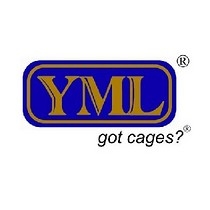15 Easy Steps to Ferret Proofing a Room


Ferrets are entertaining, friendly, and adorable pets. They’re also highly active and curious, and they’ll gnaw on just about anything they can get their teeth into. Ferrets should be let out of their cage at least once a day for two hours, according to experts, which gives them plenty of opportunity to explore, perhaps make a mess of a room, and get themselves into trouble. To protect their safety and your sanity, ferret proof your house or a single room before allowing your ferret out for some exploration.
Here are 15 methods to ensure a ferret-free environment.
1. The Best Option Is A Single Room
In a house, there are many possible ferret risks, and your ferret will likely zip from room to room seeking for items to investigate and places to hide. Monitoring an entire house is really challenging. While there are still risks in a single room, it is easier to know what your ferret is up to and manage all of the potential threats if you can seal that area off. Although you should constantly observe your ferret when it is outside of its cage, having a single area allows you to breathe a bit easier.
2. Look For Ferret Exits and Block Them Off
A ferret exit is not the same as a human exit, and these cunning little critters can get into surprisingly tight locations. This includes gaps in windows and even some significant gaps beneath doors. You should also inspect surrounding plumbing, such as where pipes enter and exit the kitchen, because gaps can form around the pipes. Your ferret will very probably be able to get its body through a space if it can get its head through.
3. Disconnect Appliances
Your appliances’ plumbing isn’t the sole source of risk. Many appliances have a tiny space beneath them that allows access to the device’s motor and internal workings. This is a severe potential threat for the curious ferret, which is prone to chewing cables and can hide in a small area of a washing machine’s workings.
4. Protect the Furniture’s Underside
Similarly, while the tops of chairs and couches are usually tightly covered, even if they are still chewable for young animals, the bottom might be exposed and very attractive to your four-legged buddy. You may need to cover the underside of furniture with a strong, impenetrable cloth or other material if necessary. It’s worth double-checking beneath your sofa if you can’t find your ferret after an outing from its cage.
5. Examine Your Pillows
Cushions are another possible hiding spot. Before going in, ferrets will check for a potential weak place in the fabric, such as around the zipper or seam, and will pick the stitching apart. They may also lurk beneath cushions, so double-check before sitting to prevent squashing one.
6. Keep Your Mattresses Safe
Although mattresses appear to be resistant, box mattresses, in particular, provide an entry point. This is another instance when modifying the original design with your own fabric covering may be essential. It may seem extravagant, but covering the base of a mattress before your ferret enters will make recovering them much easier, plus it will prevent them from eating the mattress filling and suffering impaction.
7. Remove Any Edible Items
Ferrets like chewing on a variety of materials, but particularly cushions, foam, rubber, cardboard, wood, and plastic. Hairbands, elastic bands, and rubber dog or children’s toys should all be kept out of reach of your ferret, since they may ingest them and impede their digestive system.
8. Put Away the Cleaning Supplies
While you’re at it, make sure there aren’t any cleaning supplies or other potentially toxic chemicals or substances lying about. Shampoos, cosmetics, and bleaches and toilet cleansers are all examples of this. Preventing your ferret from entering the bathroom, toilet, or kitchen is the best strategy. Alternatively, put everything in a locked closet.
9. Close the Toilet
Any body of water, whether a large bath, a toilet, or simply a pail of water, poses a hazard. Wild ferrets and many domestic ferrets can swim, but even a strong swimmer can struggle if they are trapped in a body of water with no clear or straightforward way out. If your ferret falls into the toilet, it may be unable to escape, particularly if it panics and closes the lid. It’s not worth taking the chance.
10. Close the Cupboard Doors Tightly
Ferrets have powerful noses, allowing them to open cupboard doors and move other things with ease. Close cabinet doors and use magnetic or other locks to keep them securely locked and impenetrable if you don’t want to spend hours examining every drawer and closet for your tiny escapee.
11. Stay Away From Stairwell Railings
Ferrets enjoy climbing things, but they aren’t necessarily as good at descending them. They also appear to have no fear, which means they will take a leap of faith from the tops of tall structures only to get down. They will usually land safely, although this is not always the case. If your upstairs landing has open rails, don’t let your ferret go too close since it may decide to plunge.
12. Put Out The Candles and Put Out The Fires
Extinguish candles and keep an eye on your ferret if you’re using a fireplace or another hot heater. They may be wise enough to avoid open flames, but a major burn just takes one incidence.
13. Stay Away From Recliners
The rise and recline motions are produced by gears, powerful springs, and other systems within the chair. They also offer enticing tiny niches where your ferret believes it would be a good idea to sit. Unfortunately, the chair mechanism likes to wander to these open spots, and if your child is in the chair when it is being used, they may get squished. Use reclining chairs sparingly until you know where all of your dogs are.
14. Double-check The Laundry
Ferrets prefer to hide in clothes because it is easy to burrow and provides ample protection from the outer world. Check any laundry before putting it in the machine, and double-check the machine before turning it on if your ferret is out of its cage. Better still, wait until the ferret has returned to its cage.
15. Constant Monitoring
When you let your ferret out, keep an eye on it. They are curious creatures, which may lead to them getting into all sorts of mischief, even if you haven’t specifically highlighted a problem place or object. Keep an eye out, an ear open, and your senses on the lookout for any potential threat.
Petstup is an official seller of the many well-known pets brands, focused on improving the lives of pets, pet parents and our partners. We proudly offer a large variety of pet nutrition products and supplies competitively priced for dogs, cats, reptiles, fish, birds and small animals. Petstup is your one stop shop for all your pet’s needs. All our products are authentic, and pass all mandatory United States standards and veterinary practices. We run several warehouses across the United States to serve you better and faster.




















